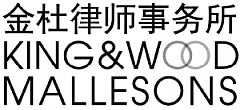Key issues: The requirements for recognizing whether a prior trade name has certain fame can be lowered under the condition that the relevant party acts in bad faith.
Lexani Wheel Corporation (hereinafter referred to as
"Lexani" or "plaintiff") has been using
"LEXANI" as its trade name since 1996. (Lexani & design) is a
leading brand in the field of custom wheel hubs and wheels. In
China, Lexani has authorized third parties to produce
"LEXANI" branded wheel hubs in its name since 2005.
(Lexani & design) is a
leading brand in the field of custom wheel hubs and wheels. In
China, Lexani has authorized third parties to produce
"LEXANI" branded wheel hubs in its name since 2005.
On February 5, 2007, a Ms. Wang applied for the registration of
trademark " " (hereinafter
referred to as "the opposed mark") under No. 5888878 in
respect of wheel hubs, wheels, and other car related products in
class 12.
" (hereinafter
referred to as "the opposed mark") under No. 5888878 in
respect of wheel hubs, wheels, and other car related products in
class 12.
Lexani filed an opposition on the grounds that this mentioned application infringed upon its prior trade name right, copyright, and was an attempt in registering its prior used trademark with certain fame. But both the China Trademark Office and the Trademark Review and Adjudication Board (hereinafter referred to as "TRAB") rejected the opposition.
Lexani appealed to Beijing First Intermediate People's Court
(hereinafter referred to as "court of the first
instance"). During the trial of the first instance, Lexani
supplemented the copyright registration certificate issued by
Copyright Protection Center of China to prove its prior copyright
over the logo  . In the meantime, Ms.
Wang could not provide reasonable explanation as to the creation of
the opposed mark during the hearing of the trial.
. In the meantime, Ms.
Wang could not provide reasonable explanation as to the creation of
the opposed mark during the hearing of the trial.
After examination, the court of the first instance held that with no evidence to the contrary, the fact that the company name containing "LEXANI" was able to prove that "LEXANI" was the trade name of the plaintiff. Given that Lexani had already had business with Chinese companies prior to the filling date of the opposed mark, and the company's use of "LEXANI" as its trade name had also been reported by the local mainstream media such as NetEase and iFeng.com, the relevant public would likely associate "LEXANI" with "the luxury wheels" produced by the plaintiff. Therefore, the aforesaid evidences are able to prove that the trade name "LEXANI" had been used and gained certain fame in mainland China. Furthermore, the opposed mark "LEXANI" is identical with Lexani's trade name, it is highly possible for the relevant public to mistakenly believe the goods bearing the opposed mark are from Lexani or have particular relations with Lexani. Moreover, since the plaintiff's trade name "LEXANI" is a coined word with high originality, the possibility of coincidence can be excluded as Ms. Wang could not explain the creation of the opposed mark. It is reasonable for the court to believe that Ms. Wang applied for the opposed mark with full awareness of the plaintiff's trade name "LEXANI". Hence, the court of the first instance ruled that the registration of the opposed mark infringed upon Lexani's prior right over its trade name and violated Article 31 of the 2001 Trademark Law. The court rescinded the TRAB's Decision and demanded the TRAB to make a new one.
TRAB appealed to Beijing Municipal Higher People's court (hereinafter referred to as "court of the second instance").
The court of the second instance held that the judgment of first instance was justified in recognizing both facts and application of laws and therefore should be sustained.
As Lexani's agent, King & Wood Mallesons participated in both the first and second trials.
Comments:
When deciding whether a trade name can serve as a prior right to block a later filed trademark, the court mainly considers if the evidences concerning the use of the trade name are sufficient to prove such trade name had enjoyed certain popularity among the relevant public. However, the court will also take into account other factors such as whether the concerned party has bad faith before rendering a judgment.
In this case, plaintiff's evidences regarding the prior use of its trade name are limited to several invoices and bills of landing for its business with some Chinese companies, and several media reports published by two Internet media. However, the court of the first instance still held the registration of the opposed mark infringed upon Lexani's prior trade name right, after considering Ms. Wang's bad faith, which is proved by the fact that the opposed mark is phonetically and conceptually identical with the plaintiff's prior trade name of high originality while Ms. Wang was not able to explain her creation of the opposed mark. The court of the second instance sustained the judgment of the first instance finally.
As it turns out, both courts did not set up a high-standard requirement for evidences concerning the prior use of the plaintiff's trade name when recognizing the fame of its prior trade name. The courts actually properly lowered the requirement under the circumstance that the concerned party had bad faith. This can somewhat show the guiding direction of the court and is of reference value for cases like this.
The content of this article is intended to provide a general guide to the subject matter. Specialist advice should be sought about your specific circumstances.


